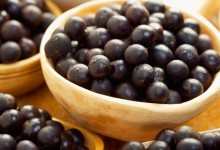When it comes to the subject of slimming down, there are many things that you’ve been told over the years that might seem to work, but when checked out more seriously, turn out to be another mistake that is preventing you from losing pounds and inches.
Here are the first 6:.
Myth 1: You should count calories to lose pounds.
Our forefathers never considered calories. They didn’t even find out what a calorie was. But still, somehow, very few people were so heavy before food was mass produced in the early years of the 20th century. Research studies show that 95.4 per-cent of the time, considering only calories does not fend off weight during the long term. Counting calories is like madly scrambling through a minefield. In its place, if we eat healthful, natural foods and stop stressing over calories, our bodies will normally settle at a healthy weight.
Myth 2: We can eat anything at all in moderation.
For years we’ve been assured that it’s not what we eat that matters, it’s how much. This standard advice is doing nothing but keeping us heavy. In actuality, it is the quality of the food that counts, not the amount. Eat a lot of higher- quality foodand you will unconsciously stay clear of eating too much and give your body with health and nutrition that reprograms the body to behave more like a naturally thin person.Quality foods mean foods that are unrefined, low in sugar, with healthy oils which include coconut and olive oil.
Myth 3: All calories are created equal.
Some foods won’t satisfy, even if they’re loaded with calories. You want calories but you also need nutrients. Eat foods that are fulfilling, low in calories, and high in nutrients, including salads, because they will be more satisfying than the same quantity of calories from junk foods. Taking a multivitamin is able to also help. In Canadian examinations issued in the British Journal of Nutrition, those individuals who used multivitamins during a diet and exercise program were much less hungry and shed more weight.
Myth 4: Sexual activity burns many calories.
The typical session of sexual relations consumes a modest 21 calories according to a recent study in the New England Journal of Medicine. So it’s best not to consider a bedroom romp as a replacement for physical exercise.
Myth 5: You melt as many calories walking a mile as you do running a distance.
At first, this appears to be logical since it requires much longer to walk a mile than it does to run it. So the calories burned should be equal, correct? Only they’re not. A study in Medicine & Science in Sports & Exercise indicated that women lost an average of ninety one calories running a mile. Walking burned only forty three.
Myth 6: Bariatric surgery reduces subjects down to their ideal body weight.
The surgical procedure truly does make individuals less hungry and contemplate food less, but that doesn’t mean all the extra weight will vanish. Most people reduce between FIFTY and 65 percent of their extra fat after gastric band, gastric bypass, or similar procedures. For example, where a 100-pound reduction would be optimal, the actual long-term decrease is more typically to range between FIFTY and 65 pounds, depending upon the type of surgery.
Keeping up a healthy weight will help you root causes of the chronic diseases of aging.
